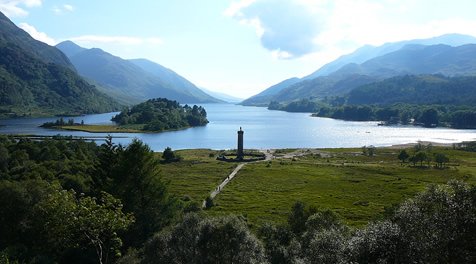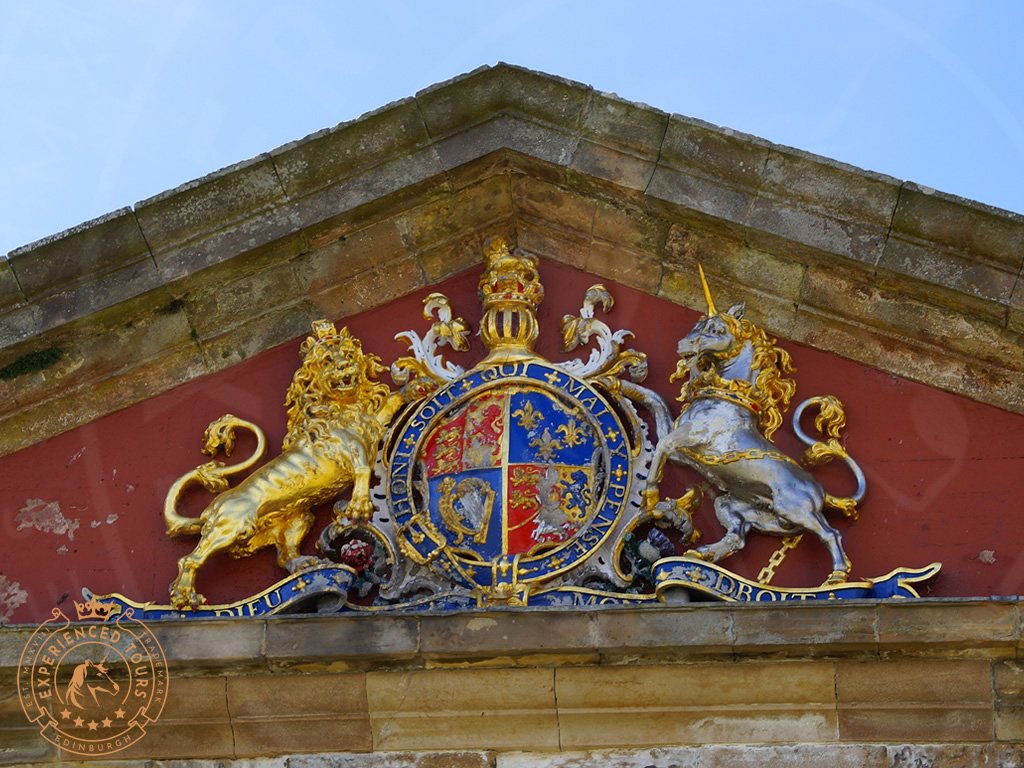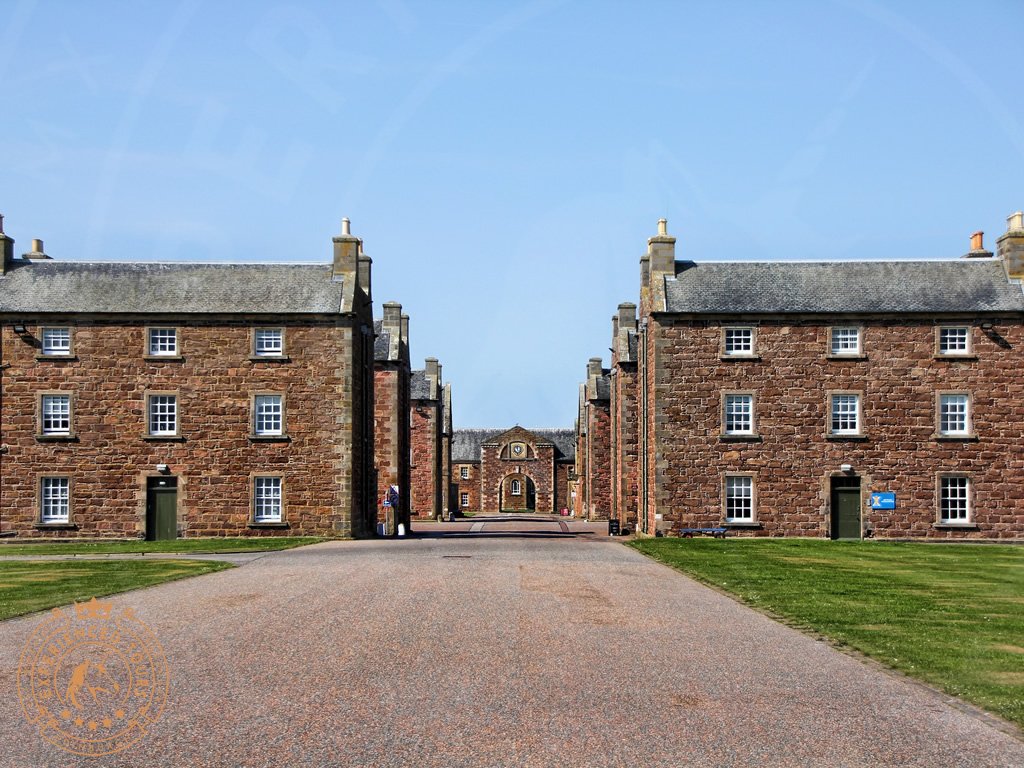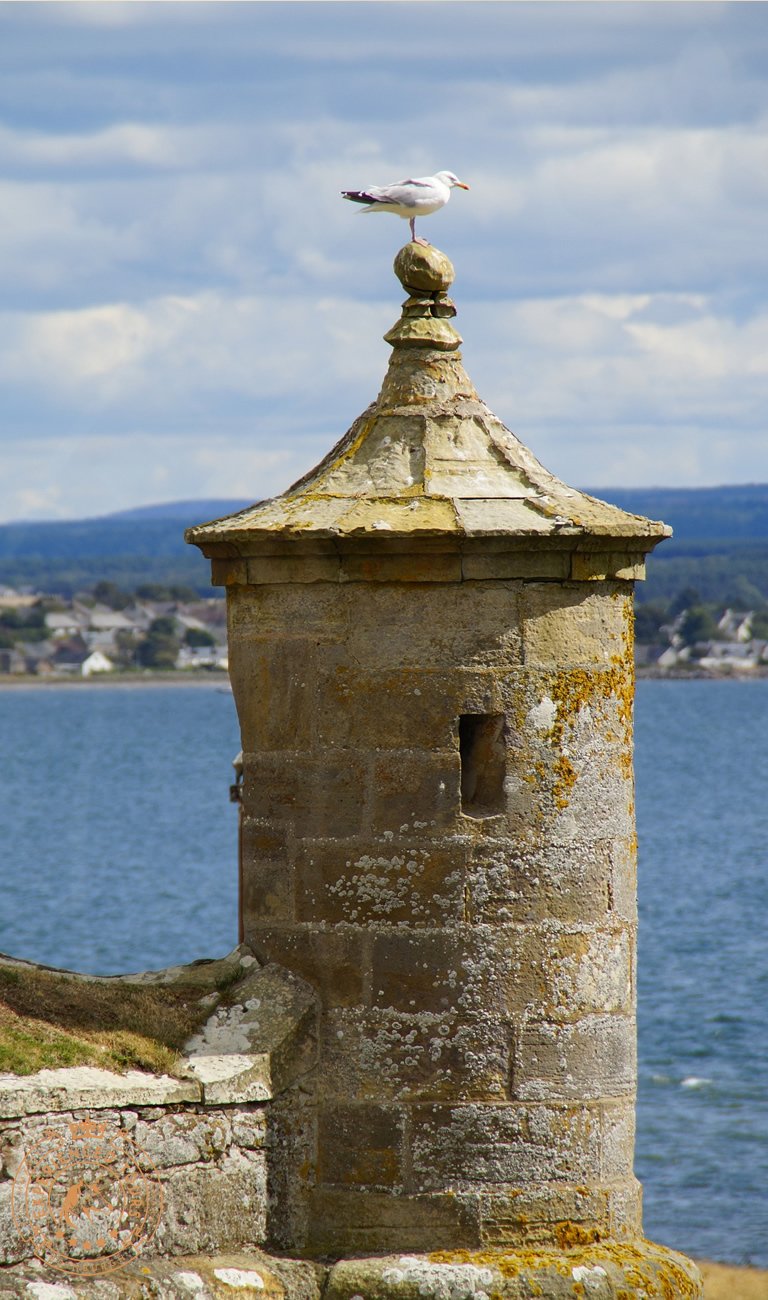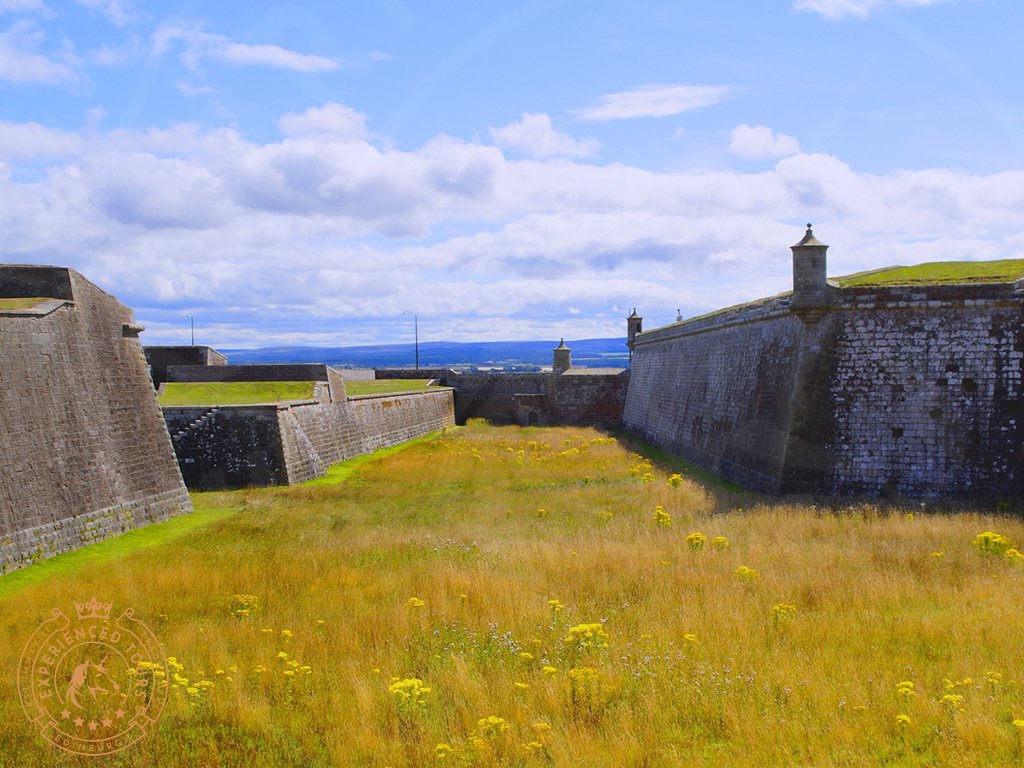Fort George
There is no finer example of military engineering in Britain than Fort George. Named after the then ruling monarch George II, it was completed in 1769. This was 20 years after work had started, and the fort had cost twice the amount expected. It was intended to prevent another uprising after the defeat of the Jacobite rebels at the Battle of Culloden in 1746.
Built of sandstone, it sprawls along the shore of the Moray Firth near Inverness. It is massive: around 600 yards (560 metres) by nearly 300 yards (300 metres). It reaches a maximum height of 40 feet (12 metres), with grassed walls several yards wide. A moat and drawbridge protected the landward side. To the seaward, the walls rise direct from the shore.
There is provision for an amazing 80 guns, none of which was ever fired in anger. The designer was Lieutenant-General William Skinner who became its first governor. The fort has scarcely been altered since it was built. Within the walls are staff houses and barracks for 2000 men, stores, workshops, gunpowder magazines and a chapel.
It has been in use continuously since 1769 for army recruitment and training and as the base for the Seaforth Highlanders and several other regiments. Currently it is home for the 3rd battalion, Royal Regiment of Scotland. The Regimental Museum of the Seaforth, Queen’s Own and Cameron Highlanders documents their histories and that of the fort.
Fort George
Near Ardersier
Inverness
IV2 7TD
www.historicenvironment.scot
Open annually
Private tours that visit this location:
